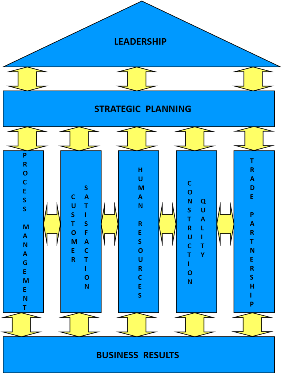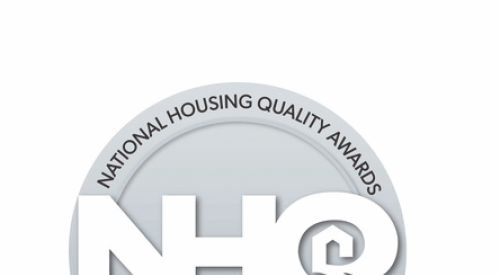The NHQA application document is not simply the method of applying for the NHQA, it is an excellent overview of your business and a key method for conducting organizational wide self-assessment to the NHQA Criteria. The application is also a great support document to add to a business plan, as a key component of your strategic planning and a wonderful document for new employees to quickly understand your business and the organizations history.
So what are the key tips for creating a successful application document. This might seem obvious but it is really about providing exactly what is asked for. The application is a 19 pages long maximum. One page is the Company Overview and the other 18 pages answer each of questions under Leadership, Strategic Planning, Process Management, Customer Satisfaction, Human Resources, Construction Quality, Trade Relationships and Business Results. The application needs to be written in 12 point Times New Roman Font. No additional documentation is required or considered.
This is not a marketing document this is about the Judges looking for the specific answers to the questions that are asked in the Application Criteria. By answering each key point and each sub topic question within each category you will be focusing on exactly what is needed. In fact may want to number each of your answers against each of the questions ie 1.1.2. so the judges can clearly follow. These answers provide a detailed insight into how your business operates. With a Judging team spending hours reading and analyzing your application they can provide a detailed list of your strengths and Opportunities for Improvement (OFI). If you make the cut for a site visit then the application will become the guide to your organization and the Judges will be looking to learn in more detail how your business functions. So the more detailed and accurate the application the better the feedback and the more successful the document itself.
When you begin to write the application you may feel that it is too large and you will never fill 19 pages. However, what you will discover is that 19 pages are just not enough, it will be a challenge. So you need to be to the point and provide evidence. The evidence can relate to your construction cycle time, defects at closing, customer satisfaction scores at move in and 11 months etc. A key place to compile such data is in Category 8 Business Results. Again providing the data or number for each of the metrics asked for in Category 8 is key. Ideally you should provide metrics covering 3-5 years so that trends can be determined. A table can be the best way to attempt to relate this information.
In terms of self-assessment, as you write the application the places where you cannot answer the questions or you have vague answers become the key areas that you need to think about. Why don’t you have the answers, how important are these to your business. The old phrase ‘you don’t know what you don’t measure’ comes to mind. Areas that you have little information on, may be critical areas where you are losing profit.
You will find that some questions seem to overlap. This is common in Leadership, Strategy, Construction and Business Results for example, because there is a natural flow from what you want to happen to it occurring to it impact. To save on space in the application you can cross reference to other sections especially with data. For example if you are describing your process for focusing on the customer you can provide evidence that this process has been successful by cross referencing to your table in Category 8 Business Results in which you showed your 3 past years of customer satisfaction scores at move in.
A good way to start the application writing process is to simply use bullet points to note what you consider to be your best practices for each category and then to note what metrics you have to show their impact. From this starting point you can build a rough draft fleshing out the details and explaining how you operate. Don’t worry about spelling, flow or how well it sounds at first just get a rough draft outlined.
Each year you can update you application document and so it can become a key business document supporting strategic planning, internal communication, self-assessment and an application document ready to submit.
Start NOW. Whether this is your first application or a reapplication, start building your application now to avoid a panic later! Remember this is not just about an application, this is about better understanding your business, focusing on areas to improve your bottomline and drive business success.












